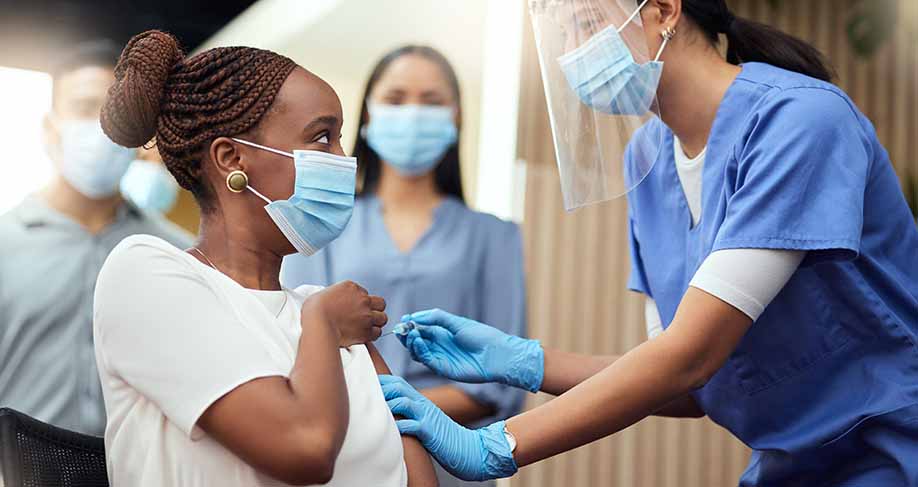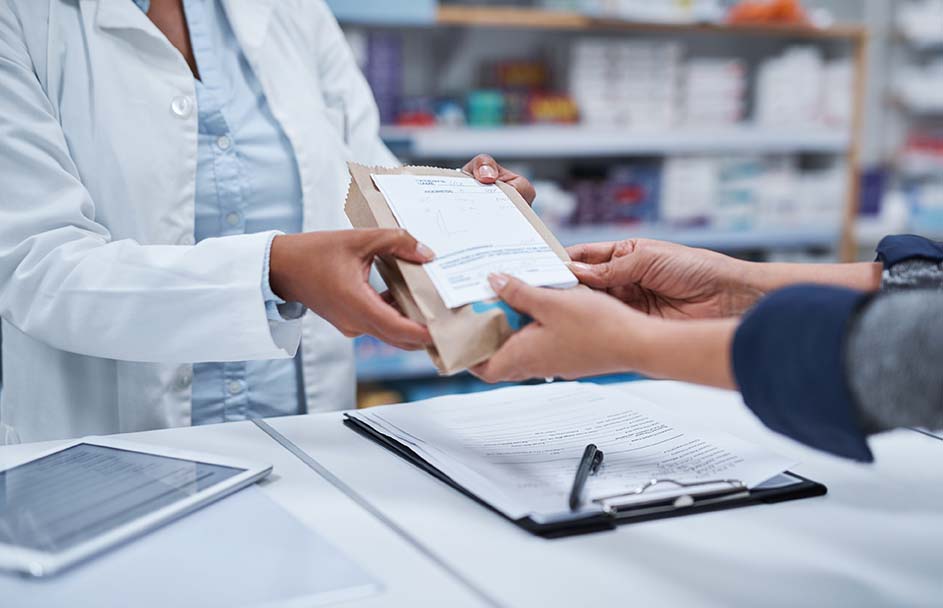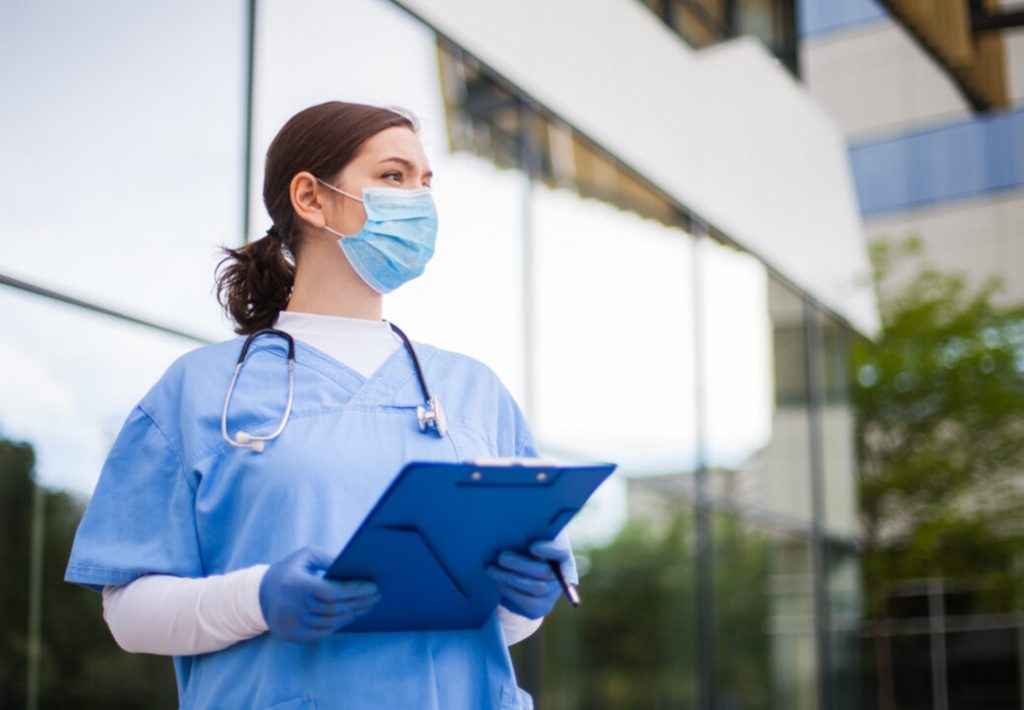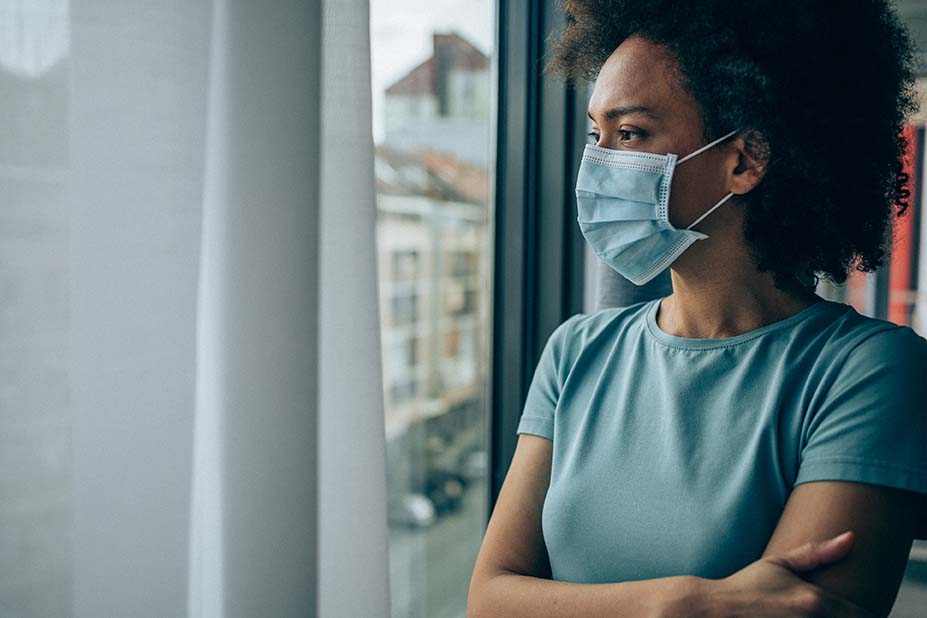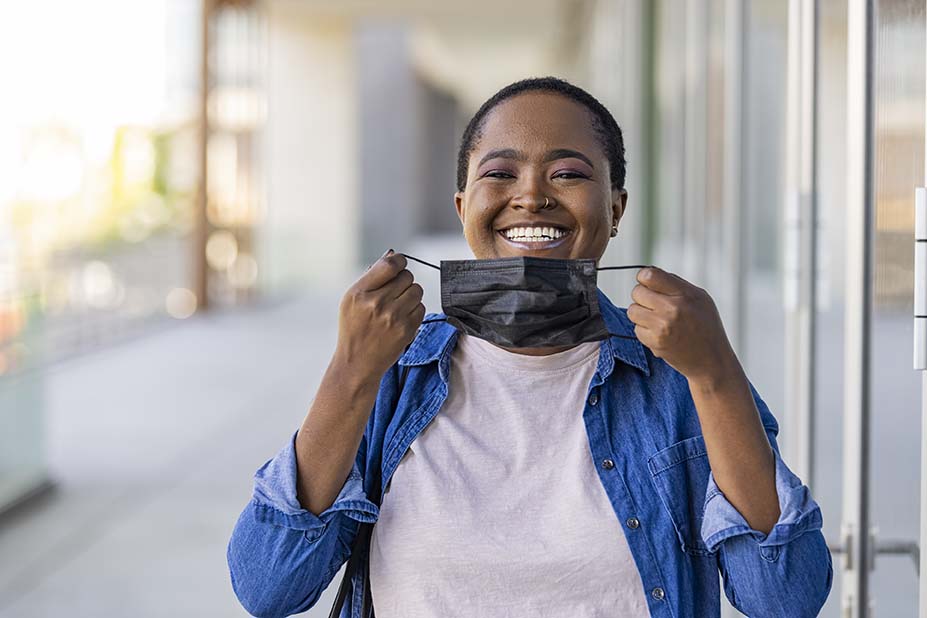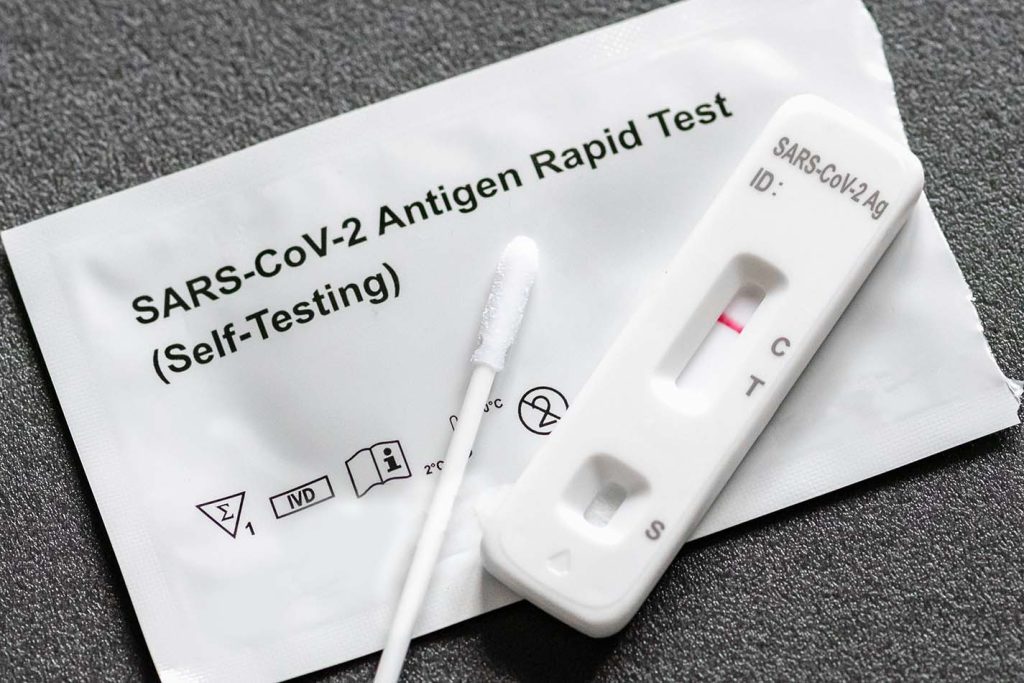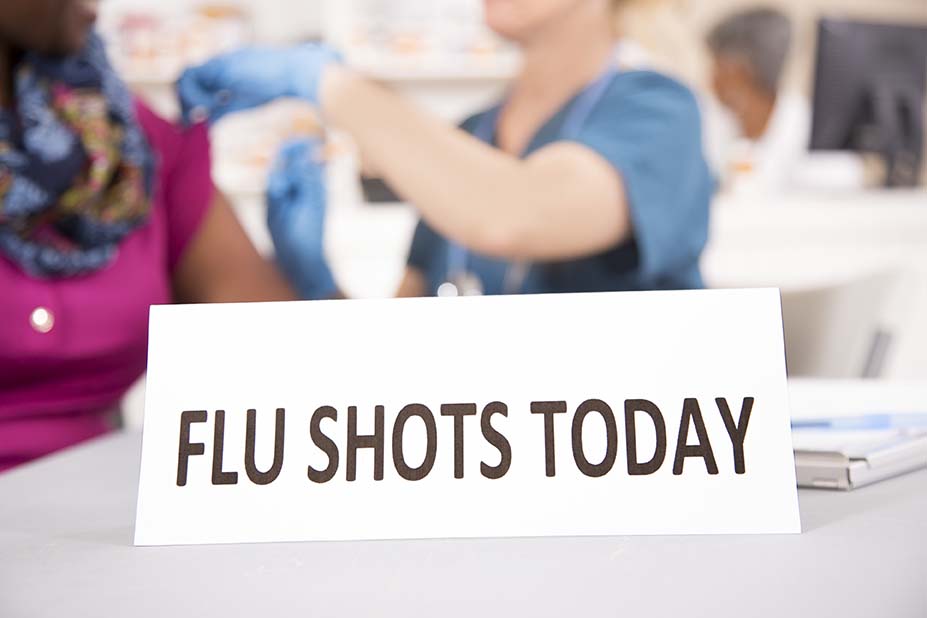CAI’s Racial and Ethnic Approaches to Community Health (REACH) Ferry Good Health Project uses a community-led approach to help to reduce chronic illness among African American/Black residents in five underserved ZIP codes in Buffalo, New York. As part of that work, they share guidance and resources about preventing and treating the flu and COVID.
We update this page regularly to share the most recent guidance from the CDC and other sources.
On this page:
- REACH Buffalo 2022-23 Community Needs Assessment
- Where to Get Vaccines in Buffalo, NY
- COVID-19 Vaccine Update
- CDC Bridge Access Program
- COVID-19 Treatments and Medications Information
- COVID-19 Deaths by Vaccination Status in the United States
- COVID-19 Quarantine and Isolation Information
- COVID-19 Mask and Respirator Guidance
- Tips for Conducting an At-Home COVID-19 Test
- Flu Update
REACH Buffalo 2022-23 Community Needs Assessment
From July 2022 to February 2023, a Community Needs Assessment (CNA) was completed to better understand community perspectives in our priority zip codes about COVID-19 vaccination.
Read the full report or a one-page summary.
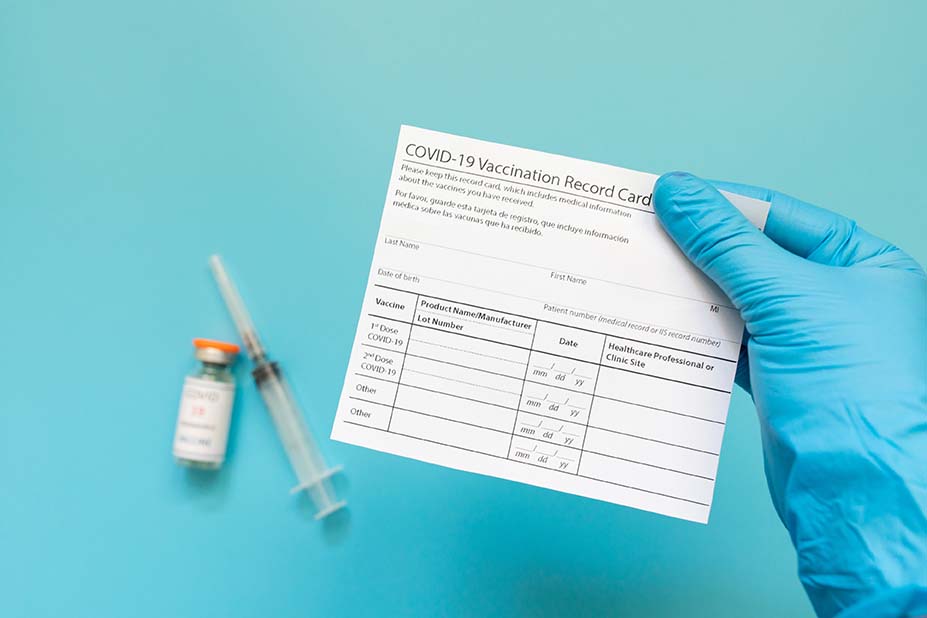
Where to get COVID-19 and Flu Vaccines in Buffalo, NY (including In-Home Vaccination Programs)
Locate a COVID-19 vaccination site:
- Search for vaccination locations by zip code at vaccines.gov.
- Call your local pharmacies.
- Call your healthcare provider and pediatrician.
- Call the Erie County Department of Health (ECDOH) Vaccination Clinic at (716) 858-7687 to schedule an appointment.
Community Health Center of Buffalo, Inc. (CHCB)
Please contact Trinetta R, Alston, LPN (Vaccine Coordinator) at (716) 986-9199, ext. 5907, to ask about eligibility/schedule an in-home appointment to receive a COVID-19 vaccine or flu vaccine.
COVID-19 Vaccine Update
The 2023-2024 updated COVID-19 vaccines are now available.
What You Need to Know:
- CDC recommends the 2023-2024 updated COVID-19 vaccines.
- Everyone aged 5 years and older should get 1 dose of the updated Pfizer-BioNTech or Moderna COVID-19 vaccine to protect against serious illness from COVID-19.
- People who are moderately or severely immunocompromised may get additional doses of updated COVID-19 vaccine.
- Children aged 6 months- 4 years need multiple doses of COVID-19 vaccines to be up to date, including at least 1 dose of updated COVID-19 vaccine.
- COVID-19 vaccine recommendations will be updated as needed.
For more information, please visit the CDC website.
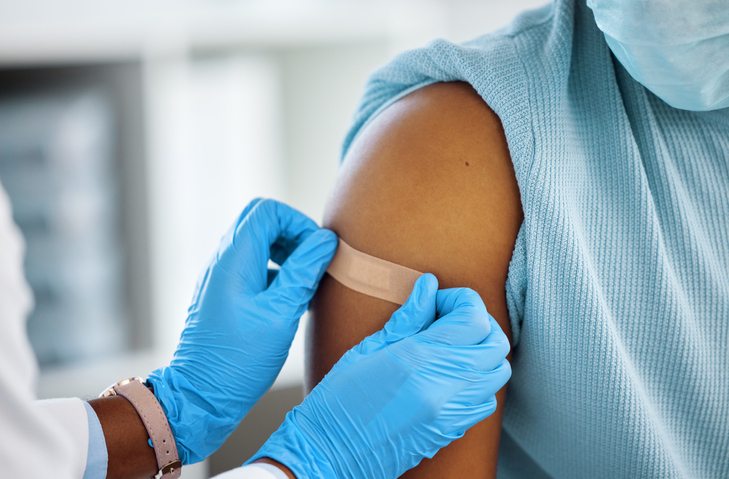
CDC Bridge Access Program
CDC’s Bridge Access Program provides no-cost COVID-19 vaccines to uninsured and underinsured adults.
CDC’s Bridge Access Program provides no-cost COVID-19 vaccines to adults without health insurance and adult (ages 18-64) whose insurance does not cover all COVID-19 vaccine costs. No-cost COVID-19 vaccines through this program will be available until December 31, 2024.
You can get no-cost COVID-19 vaccines at healthcare providers, federally supported health centers, and retail pharmacy chains participating in the Bridge Access Program. Visit vaccines.gov to find providers that offer no-cost COVID-19 vaccines through the Bridge Access Program.
COVID-19 Treatments and Medications Information
What You Need to Know:
- If you have COVID-19 and are more likely to get very sick, treatments are available that can reduce your risk of hospitalization and death.
- Don’t delay: Treatment must be started within days after you first develop symptoms to be effective.
- Other medications can help reduce symptoms and help you manage your illness.
- The Treatment Locator (hhs.gov) can help you find a location that offers testing and treatment or a pharmacy where you can fill your prescription.
Please visit the CDC’s website for more information regarding COVID-19 treatments and medications.
COVID-19 Deaths by Vaccination Status in the United States
All vaccinated groups had overall lower risk of dying from COVID-19 compared with people who were unvaccinated.
People who were vaccinated with an updated (bivalent) booster dose had lower rates of dying from COVID-19 compared with people who were vaccinated but had not received an updated booster dose.
Rates of COVID-19 by Vaccination Status in the United States
- In March 2023 (latest available data; please note that the CDC is no longer updating this data), people ages 18 and older vaccinated with an updated (bivalent booster) had 5.3x lower risk of dying from COVID-19 compared to unvaccinated people, and a 1.1x lower risk of dying from COVID-19 compared to people vaccinated without the updated (bivalent) booster.
- Please visit the CDC’s COVID Data Tracker for more information about COVID-19 deaths by vaccination status in the the United States
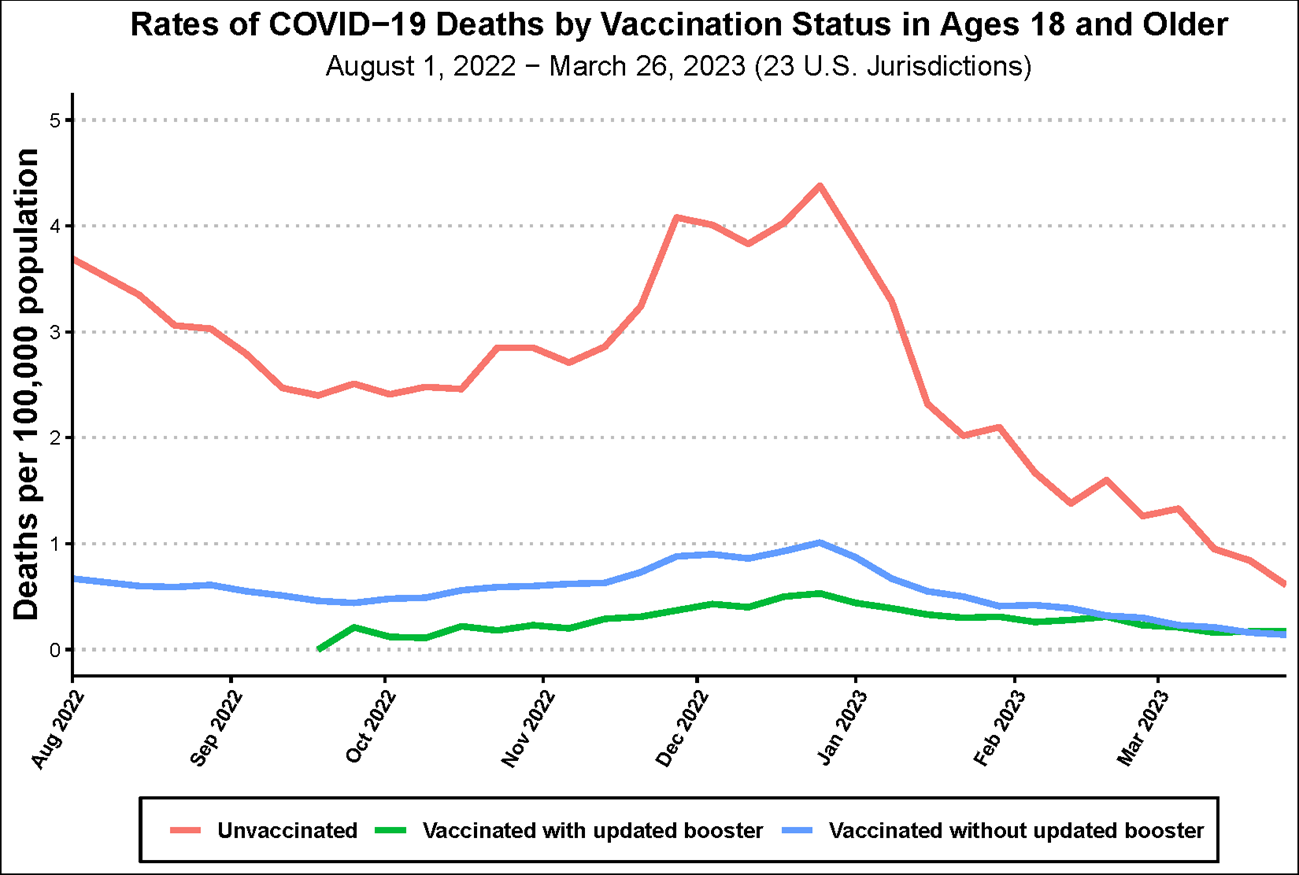
Figure 1: Rates of death of laboratory-confirmed COVID-19 among vaccinated with an updated bivalent booster (green line; data only available since mid-September 2022), vaccinated without updated bivalent booster (blue line) and unvaccinated adults (red line), age 18 years or older in the United States.
COVID Quarantine and Isolation Information
As of August 24, 2022, the CDC is streamlining its COVID-19 guidance to help people better understand their risk, how to protect themselves and others, what actions to take if exposed to COVID-19, and what actions to take if they are sick or test positive for the virus.
About quarantining
- Masks are not recommended for children under ages 2 years and younger, or for people with some disabilities. Other prevention actions (such as improving ventilation) should be used to avoid transmission during these 10 days.
- The CDC is reiterating that regardless of vaccination status, you should isolate from others when you have COVID-19.
- You should also isolate if you are sick and suspect that you have COVID-19 but do not yet have test results.
- If your results are positive, follow CDC’s full isolation recommendations.
- If your results are negative, you can end your isolation.
- You should also isolate if you are sick and suspect that you have COVID-19 but do not yet have test results.
About isolation
The CDC reccomends that:
- If after 5 days you are fever-free for 24 hours without the use of medication and your symptoms are improving, or you never had symptoms, you may end your isolation after day 5.
- Regardless of when you end isolation, avoid being around people who are more likely to get very sick from COVID-19 until at least day 11.
- You should wear a high-quality mask through day 10.
- Recommending that if you had moderate illness (if you experienced shortness of breath or had difficulty breathing) or severe illness (you were hospitalized) due to COVID-19 or you have a weakened immune system, you need to isolate through day 10.
- Recommending that if you had severe illness or have a weakened immune system, consult your doctor before ending isolation. Ending isolation without a viral test may not be an option for you. If you are unsure if your symptoms are moderate or severe or if you have a weakened immune system, talk to a healthcare provider for further guidance.
- Clarifying that after you have ended isolation, if your COVID-19 symptoms worsen, restart your isolation at day 0. Talk to a healthcare provider if you have questions about your symptoms or when to end isolation.
- Recommending screening testing of asymptomatic people without known exposures will no longer be recommended in most community settings.
- Emphasizing that physical distance is just one component of how to protect yourself and others. It is important to consider the risk in a particular setting, including local COVID-19 community levels and the important role of ventilation, when assessing the need to maintain physical distance.
COVID-19 Mask and Respirator Guidance
Certain masks provide more protection from COVID-19 than other masks (e.g., N-95 masks provide more protection than cloth masks). The CDC has released new guidance regarding mask wearing as of May 11, 2023.
What mask or respirator should I wear?
Along with getting vaccinated and boosted, wearing a well-fitting mask over your mouth and nose in indoor public settings or crowds is crucial to protect yourself and others from COVID-19. Experts recommend you upgrade your mask to a high filtration respirator if you want optimal protection. Read more about types of masks and respirators at the CDC website.
Tips for Conducting an At-Home COVID-19 Test
COVID-19 testing kits have become available for at home use and it is important to conduct the test correctly in order to get the most accurate result.
Please contact a HRSA health center, Test to Treat site, or ICATT location near you to learn how to access low- or no-cost COVID-19 tests provided by the federal government.
How to use a self-test
Read the complete manufacturer’s instructions for use before using the test. Talk to a healthcare provider if you have questions about the test or your results.
Prepare to collect a specimen
- Wash your hands with soap and water for at least 20 seconds.
- Open the box and follow the instructions included with the self-test to collect your own nasal or saliva specimen.
- If you don’t collect the specimens as directed, your test results may be incorrect.
Perform the test
- Follow the instructions exactly and perform the steps in the order that they are listed. The manufacturer may also provide other resources, such as quick reference guides or instructional videos, to help you perform the test correctly.
- Most self-tests require the collection of a nasal specimen. A few self-tests require a saliva specimen.
- Once collected, use the specimen as described in the instructions to complete the self-test.
Tips
- Store all test components according to the manufacturer’s instructions until ready for use.
- Check the expiration date. Do not use expired tests or test components that are damaged or appear discolored based on the manufacturer’s instructions.
- Clean the countertop, table, or other surfaces where you will do the test.
- Do not open test devices or other test components until you are ready to start the testing process.
- Have a timer ready because you may need to time several of the test steps.
- Read test results only within the amount of time specified in the manufacturer’s instructions. A result read before or after the specified timeframe may be incorrect.
- Don’t reuse test devices or other components.
After you have the results, discard the specimen collection swab or tube and test in the trash, clean all surfaces that the specimen may have touched, and wash your hands.
Flu Update
Getting the flu shot is important for protecting yourself, your loved ones, and the community.
This season it’s especially important to get a flu shot to protect yourself and your loved ones from flu. Read more about the flu vaccine at the CDC site.
Protect yourself
Flu vaccines can prevent millions of people from getting flu. During the 2019-2020 flu season, flu vaccines prevented an estimated 8.7 million flu illnesses, 105,000 flu-related hospitalizations, and 6,300 flu-related deaths.
Protect your time
People who get flu are usually sick for about a week. Being protected against flu and staying healthy means you can be there for loved ones who depend on you.
Protect your community
People with certain chronic conditions are at higher risk of getting very sick from flu, including being hospitalized or even dying. Getting a flu vaccine can reduce the risk of giving flu to people with asthma, diabetes, heart disease, cancer, HIV/AIDS, and sickle cell anemia.
Protect your loved ones
A flu vaccine helps protect the people around you who are more likely to get very sick from flu, like babies, young children, pregnant people, and older adults.
FAQs about getting both the flu shot and a COVID-19 vaccine
Can you get a flu vaccine after getting a COVID-19 vaccine?
Yes, there is no required time interval in between the two vaccines. You can get a flu shot after getting a COVID-19 vaccine or you can get a COVID-19 vaccine and then get a flu shot. You can even get both vaccines at the same time.
Why should I get a flu shot if I’m not around as many people as normal due to COVID-19?
A flu shot is the best way to protect yourself, your loved ones and your community from the flu. It’s important to protect people around you, particularly people at higher risk of severe flu illness, like young children, older adults, and people with underlying health conditions.
Does a flu vaccination increase your risk of getting COVID-19?
No, there is no evidence that getting a flu shot increases your risk of getting COVID-19.
What is the difference between flu and COVID-19?
Flu and COVID-19 are both infectious respiratory illnesses caused by different viruses. COVID-19 is caused by infection with coronavirus (called SARS-CoV-2) and flu is caused by infection with an influenza virus.

